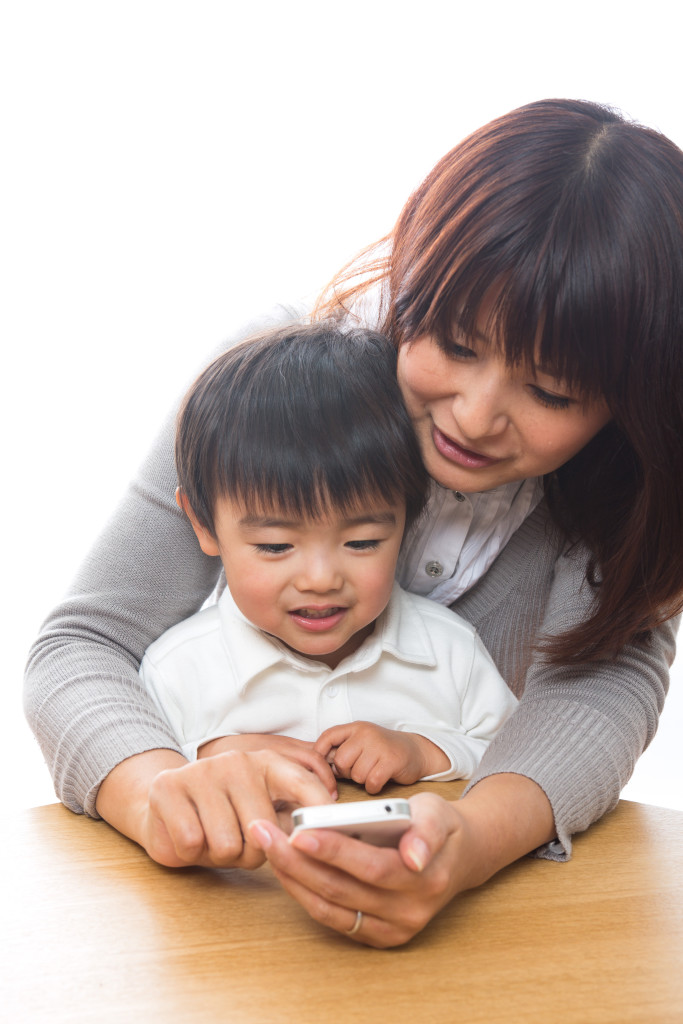Parent Voices: Doubts, Then Excitement on Texts to Promote Literacy
Posted July 11, 2014
This post is one of the more than 20 articles that appeared as part of a series called Seeding Reading, first published in 2014-15 on the EdCentral.org blog at New America and on the Joan Ganz Cooney Center blog.
By Heidi Moore
When Alexiss Evans enrolled in the Ounce of Prevention Fund’s Parent University literacy program, she did so because she believed in the organization and because she wanted to give her daughter every possible opportunity to learn. “I’m one of those parents who, if [the Ounce says] something, I’ll do it,” she said. “I want to show support and be a team player.”
Evans received text messages each weekday for six weeks. These texts suggested activities for Evans to do with her 5-year-old daughter, from playing “I spy” with letter sounds to making an alphabet chart. They also offered general words of encouragement and empathy for parents, like “After you put the kids to bed take a few moments to have some alone time. You deserve it!”
However, Evans admitted, she mostly ignored the messages for the first few days. Like many of the Head Start parents surveyed in a Northwestern University study of the program, she wasn’t convinced that texts are a good way to receive parenting information. [For more on the Northwestern study, see last week’s post and this Q-and-A.]
Then she was having a bad day and received a text from the Parent University with an encouraging message: “Hey mom & dad, we wanted to take a second to tell u what an awesome job ur doing!”
It was exactly what she needed to hear. “That’s when I started doing them every day,” she explained.
Her daughter Alissa caught on soon after and started looking forward to the texts, which arrived at the same time each day. “When I started getting messages, I would open them and read them out loud,” Evans said. “She would say, ‘Well, can we do that? What does it mean?’”
Evans appreciated that the texts helped her daughter work on critical literacy skills in different ways from traditional learning. “I felt like I was fooling her,” Evans remarked. “She loved it. You would have thought I was giving her a trip to the carnival.”
By the end of the program, Evans was among the 91 percent of intervention group participants who agreed that sending parenting tips via text was a good way to receive parenting information.
This change of heart among parents would come as no surprise to behavioral economists, who understand the importance of that little nudge in the right direction. In their book, “Nudge: Improving Decisions About Health, Wealth, and Happiness,” authors Richard Thaler and Cass Sunstein suggest that decisions aren’t made in a vacuum. Rather, a complex mix of both conscious and subconscious factors influences every decision we make.
Consider, for example, how the design of a school cafeteria affects students’ food choices—either positively or negatively. When nutritious food is displayed prominently at eye level, students tend to eat healthier. When junk food is more readily accessible, that’s what students reach for first. Notably, in the first scenario, the junk food hasn’t been removed from the cafeteria. But it’s presented as a choice, albeit a slightly more difficult one.
Thaler and Sunstein coined the term “choice architects” to describe people who direct others toward particular decisions. Their book advocates for a type of “libertarian paternalism” that guides people toward making better choices. The Obama Administration began applying the economists’ ideas to human services in 2010 with the launch of the Behavioral Interventions to Advance Self-Sufficiency (BIAS) program. A new lab at the University of Chicago will begin applying behavioral insights to early childhood development and parenting.
The Parent University program works similarly—but in this case the nudge toward a better choice is in the form of a vibrating text message inviting parents to engage in bonding and literacy-promoting activities with one’s child. Many parents fully intend to read to their child, but by the end of the day, the good intentions go out the door with “decision fatigue”—after a day of making hard choices, our stock of self-control is depleted. Even a minor inconvenience seems like too much of a hurdle. A buzzing text message with some easy instruction is just what many parents need.
And it’s delivered on a device most parents have with them at all times. Yes, that goes for low-income parents as well. According to a Pew Research Center study, 84 percent of Americans with an annual household income less than $30,000 have a cell phone of some kind. That’s only slightly fewer than the 90 percent of all American adults who now have cell phones.
The program aligns closely with the Ounce’s mission to close the early achievement gap by supporting the parent-child relationship as the foundation for all learning. “Our parents don’t have very much time or resources,” says Ann Hanson, manager of research and policy initiatives at the Ounce. “Those everyday moments of learning or interaction are critical. We’re turning that ordinary moment into a learning experience.”
For Evans, those small nudges had a lasting impact. She would reread texts days or even weeks after they were sent. “Even if I didn’t take advantage [of the advice] necessarily that day, I went back on the weekends and said, ‘We can do this, this, and this,’” she said. “It was still there, and I could come back to it when I did have that particular fruit [that was needed for an activity] or went grocery shopping and could pull up the messages.”
Evans’ partner, Brandon Jones, agreed that the texts resulted in more hands-on family activities. Although the text messages went to Evans’ phone, Jones would see Evans and Alissa, for example, creating collages or making shapes with pasta, and he would join the fun. Call it a nudge by association.
Program participant Camille Curry was already in the habit of Googling activities to keep her then-4-year-old son Ashton occupied. A busy single parent of an only child, Curry said she initially doubted whether a complete stranger could come up with suggestions that would engage his curiosity. But the texts won her over, and she says she appreciated the help and suggestions.
“What really stands out to me is how a text said to take the ‘Little Red Riding Hood’ story and have a real conversation with my son about stranger danger. ‘What did she do that you shouldn’t do? And how could she have gone about not talking to strangers?’” she said. “I wouldn’t have thought to use that book to teach stranger danger.”
However, the messages she claimed were most helpful concerned self-care and relaxation—for parents. She enjoyed mindfulness exercise in particular, which instructed her to tighten all her muscles and then gradually relax them. She still does that one.
In addition, the texts’ simplicity appealed to Curry. “It doesn’t take much,” she stated. “It’s a small suggestion, and it’s free. I didn’t have to go buy anything. That’s what I really enjoyed.”











